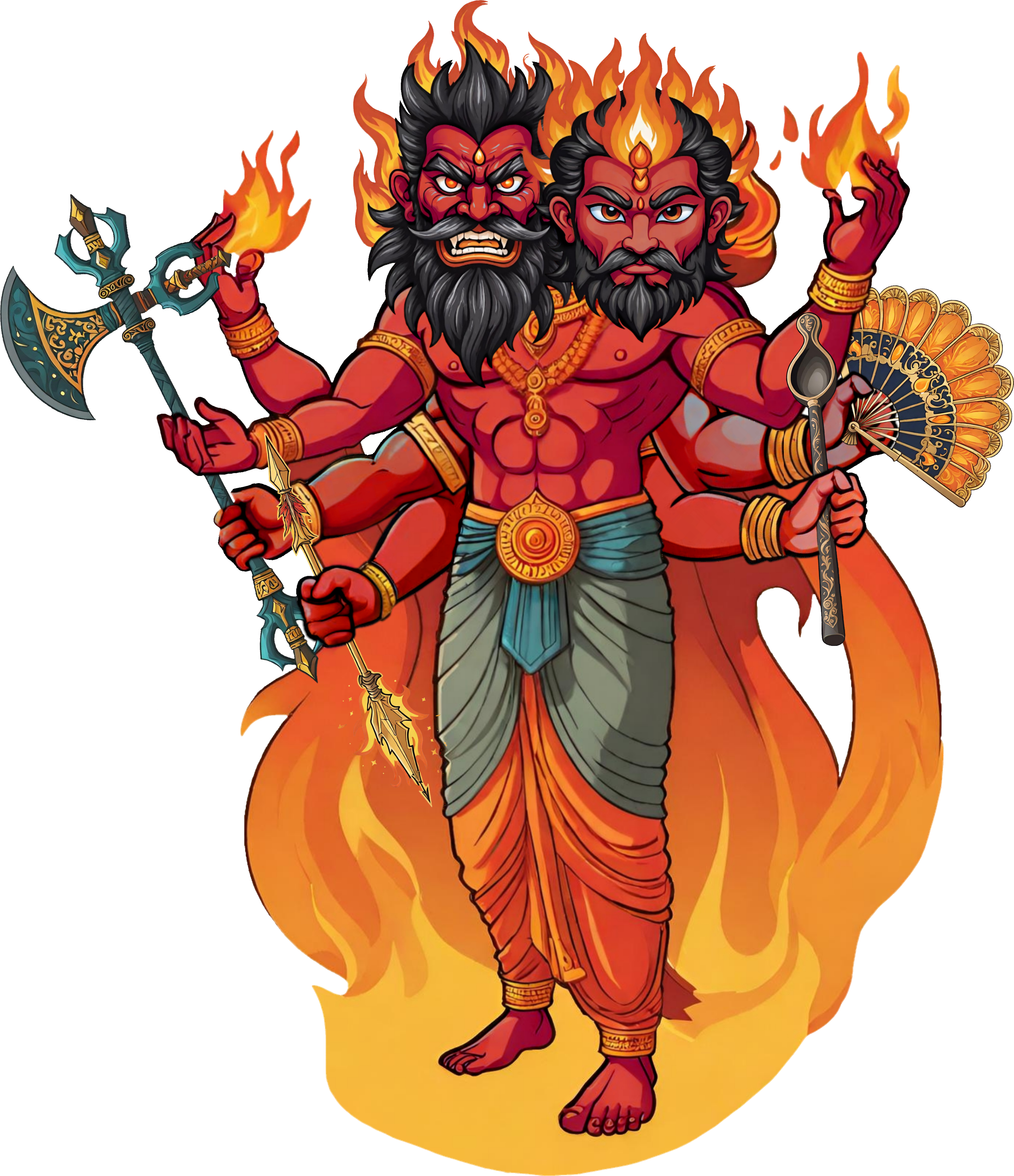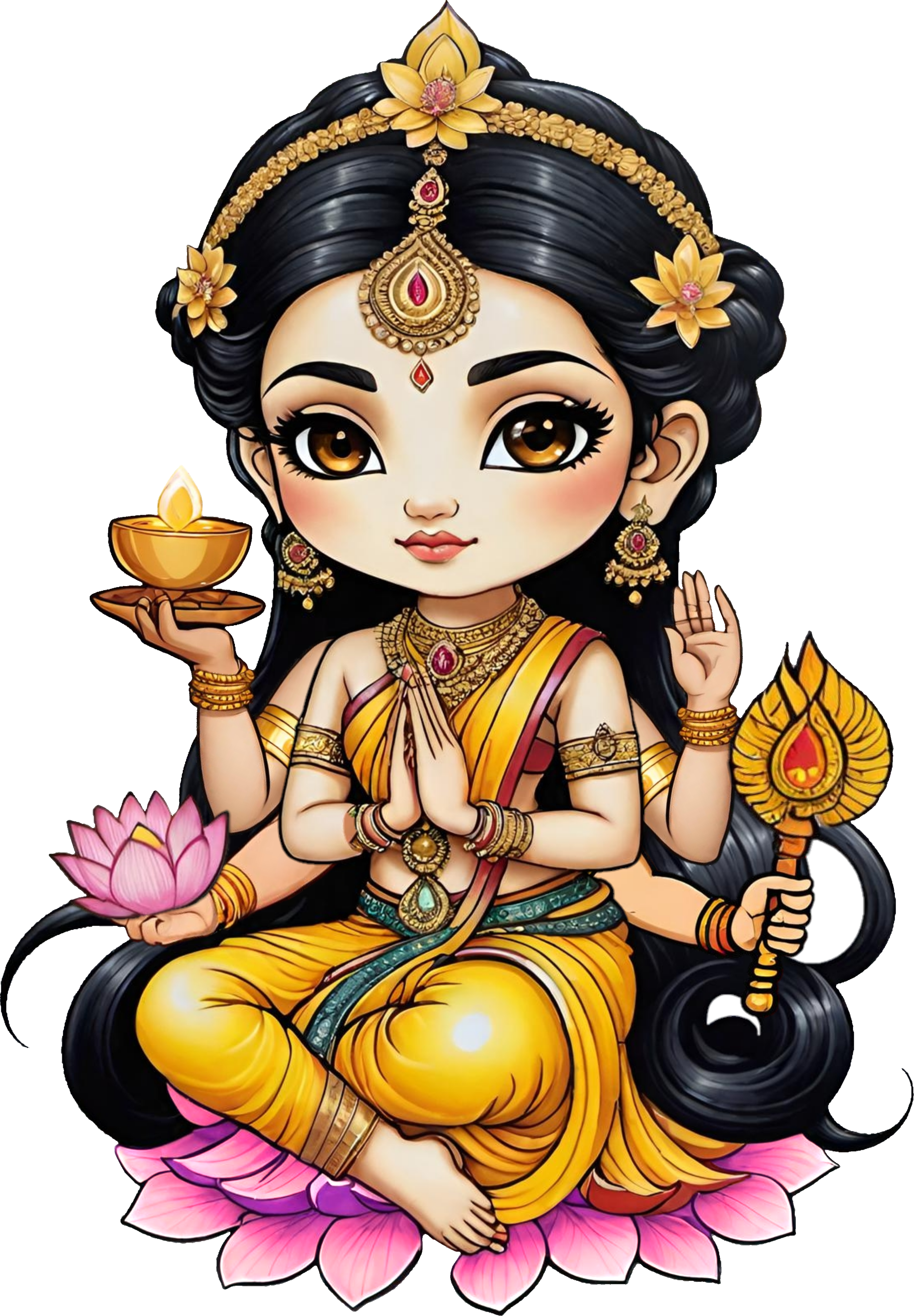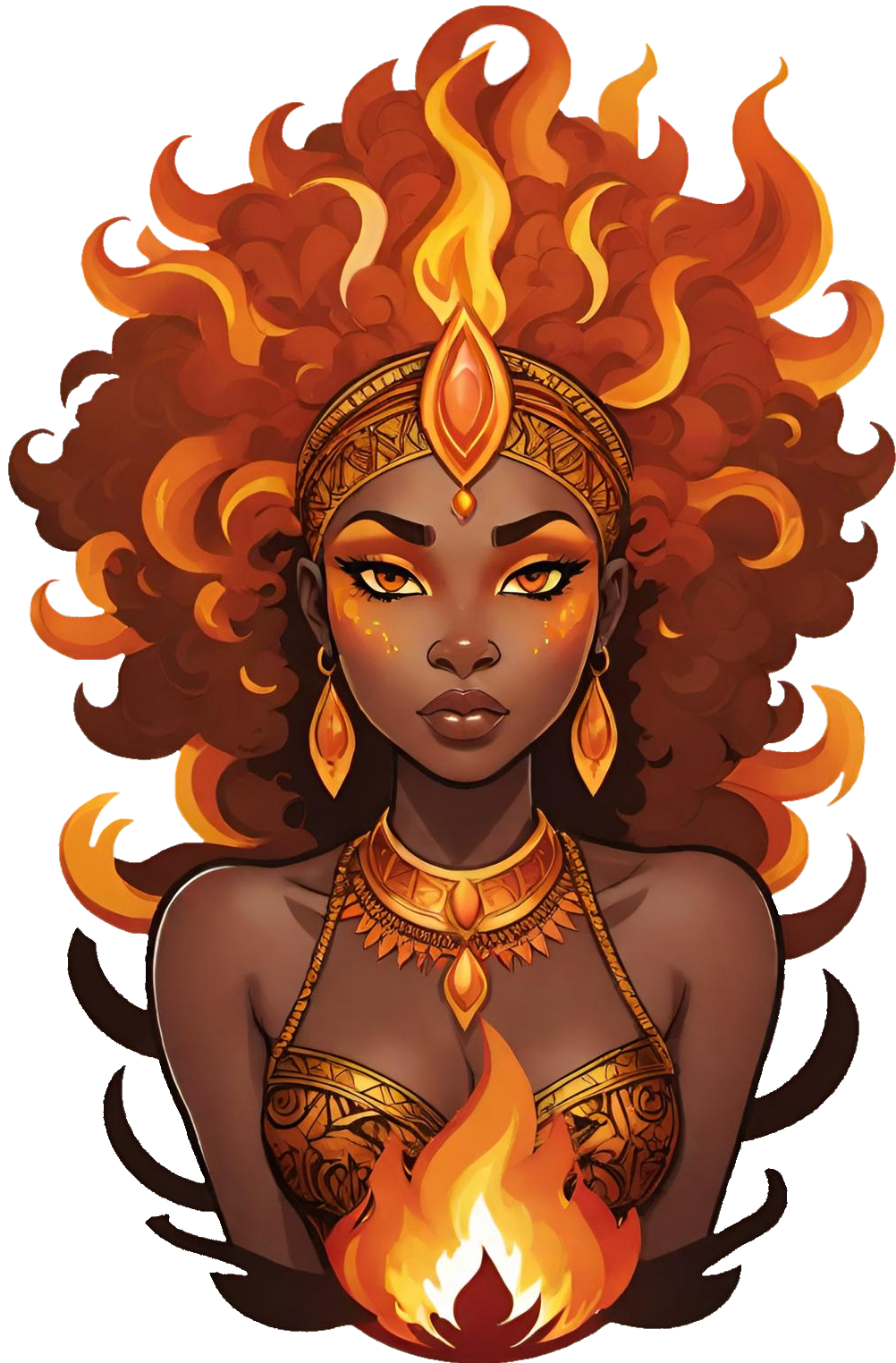Agni
Fire, Energy & Purification |
Agni is the god of fire, transformation and purification, acting as the mouthpiece and messenger of the Devas by carrying offerings, sacrifices and prayers between humanity and the celestial realms! For this reason he is invoked more than any other Devas. And as a Dikpala, Agni is the guardian of the southeastern direction. Agni's flames are both destructive and purifying, transforming, illuminating, consuming and cleansing through heat and fire. Sanatanis followers believe that what his flames consume is transported to divine realms! Overall, Agni is associated with energy, vitality and lifeforce, acting as the vital spark which animates all life. In fact, his flames are nourishing, providing warmth and light as well as fueling artisan crafts such as cooking, forging, pottery, glasswork and more! Agni is also one of five Pancabhuta, five elements which make up the physical world alongside Prithvi of earth, Ap or Varuna of water, Vayu of air, and Akasha of ether.
Agni plays a vital role within the faith of the Jainas who believe every fire contains a soul! They also believe in the existance of agni-kumaras or fire children. All Sanatanis actually believe that a fire exists within the body, acting as the vital spark of the soul. This vital spark is actually found throughout creation including the acid within the stomach, the sap of plants and as lightning in the sky. Within the body, Agni exists in three forms, krodha-agni the fire of anger, kama-agni the fire of passion and desire and udara-agni the fire of digestion. Agni's role within the body is important and it is believed the more Agni a person has, the healthier they are as it is his power which transforms food into energy and cleanses toxins from the body. Agni's dual nature can actually be separated into two entities, Jataveda and Kravyada, each having their own head on his shoulders! Jataveda is benevolent, carrying offerings to the Devas. He is also seen as the model priest, knowledgable about all creatures. Kravyada is malevolent by contrast, burning, destroying and incinerating all in his path! It is also his duty to cremate corpses, burn up funeral pyres and become a pathway to rebirth. While his fire brings despair, death and pain, it also destroys for the sake of rebirth similarly to Shiva. He moves Sanatanis through their pain and grief, destroying stagnant habits and trauma. Agni dispells darkness, decimates ignorance and delusions and spreads enlightenment! |
Depiction |
Agni is depicted with distinctly red or ashen skin, a crown of flames, a burning gaze and seven arms. Most notable are his two heads, one fericious, malevolent and wrathful while the other is calm, benevolent and warm. His red complexion represents his extreme emotions such as anger, lust and tension. Muscular and bearded, Agni is sometimes show to have seven tongues and a large belly--a consequence of eating so many offerings! In his hands, he usually holds a rosary, a sphere, an axe, torch, ritual ladle, a fan and a flaming spear. Finally, his vahana is a ram or goat or, in some regions, a red horse or rhinocerous! |
Family |
Like his fellow members of the Vasus, Agni is the son of Kashyapa and Aditi. His wife and shakti is Svaha, the goddess of fire sacrifices and oblations. Together they have three sons, Pavaka, Pavamana and Suchi, and through these sons, Agni became the grandfather of fourty-five grandchildren! Originally, Agni hadn't noticed Svaha's interest in him, infatuated instead with six wives of the Saptarishis--a desire for which he felt immensely guilty. Svaha cleverly transformed into these women and seduced Agni, allieviating his guilt and winning his affection. |
Traditions |
Agni plays a large role in the lives of the Sanatanis, bringing warmth to frigid regions--there are even legends of fire's that burn in their underwater settlements! Any rites of passage are marked with his rituals such as lighting a lamp at birth, daily offerings, in weddings and all the way to cremation after death. Agni is even believed to carry the soul of the deceased out of the funeral pyre so that it can reincarnate! |
Rituals & Holidays |
Holika | Deepvali |
Yajnas |
|---|---|---|
Festival of Colors | Festival of Lights |
Offerings of ghee and grains are cast into a holy fire while chanting hymns |
Saptapadi | Antyesti | Agnipariksa |
A part of Sanatanis wedding ceremonies, the bride and groom circle around a fire seven times--a practice considered essential. |
Ritual cremation of a body in a funeral pyre, a sacred necesity to release the soul from the body. |
Fire Test is a ritual which proves purity, chastity and faithfulness--watched overb y Agni himself! This ritual was performed by Sita at the end of the Ramayana |
Agnihotra | Yagna Kunda | Ashtanga |
Daily fire ceremony at sunrise and sunset, offering ghee, milk and seeds to Agni. Believed to cleanse guilt, evil and to ward off death. |
Flowers and ghee are offered to Agni at a fire alter and ceremonial pit made by three brahmin (priests). They chant mantras as they do so. |
A smaller version of Yagna Kunda anyone can perform on their own. Their body represents the fire pit, their creativve fire and awareness represents the fire and certain movement represent physical offerings. |
Family Tree |






Comments